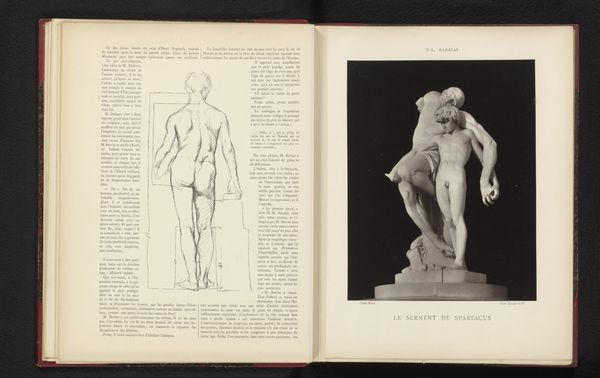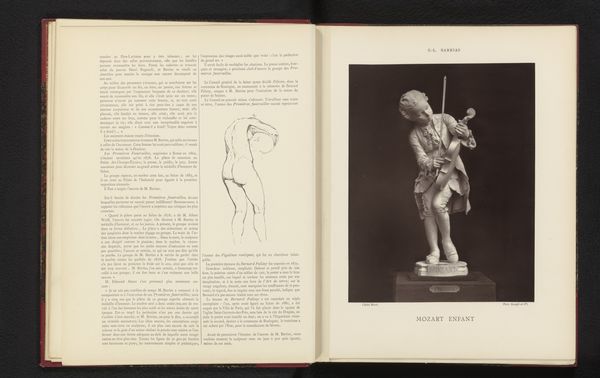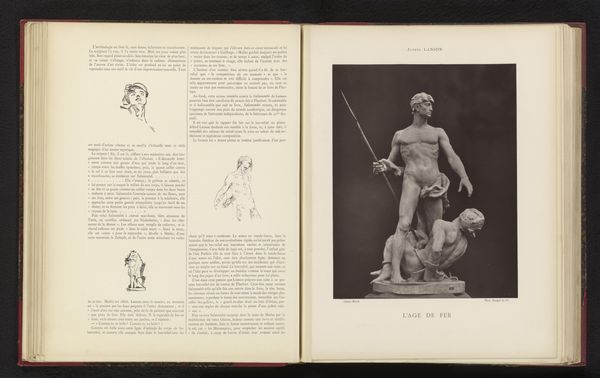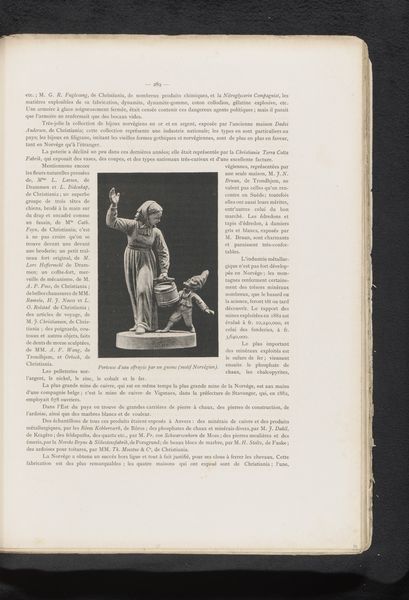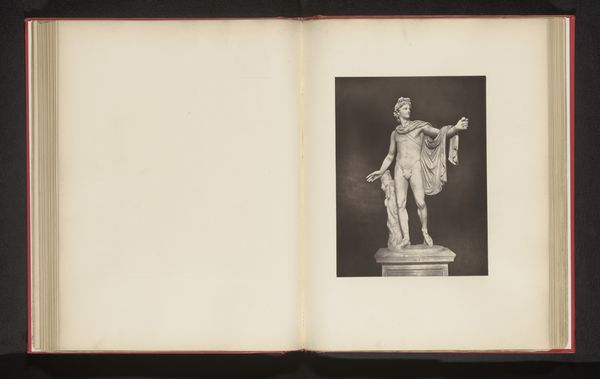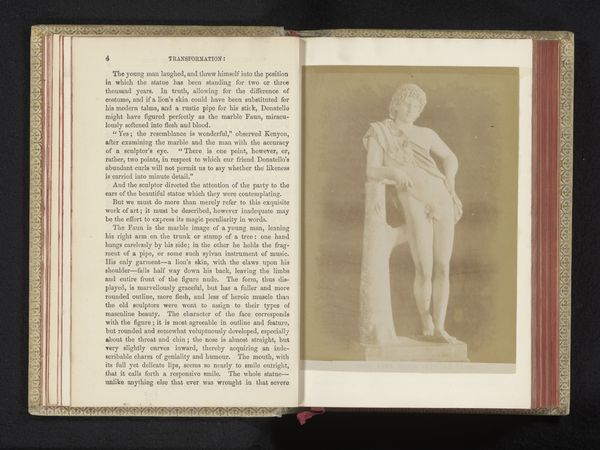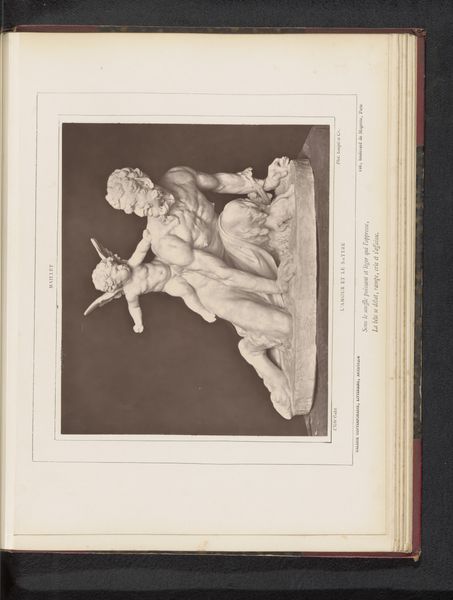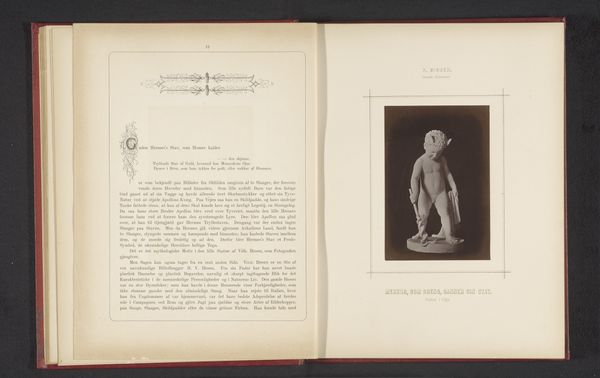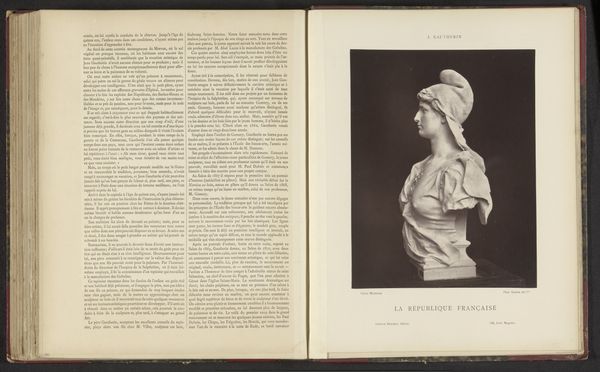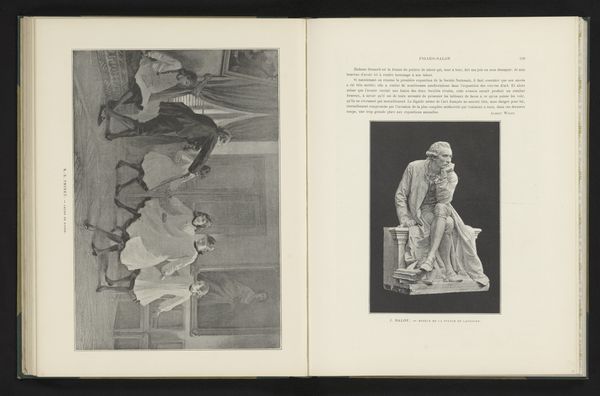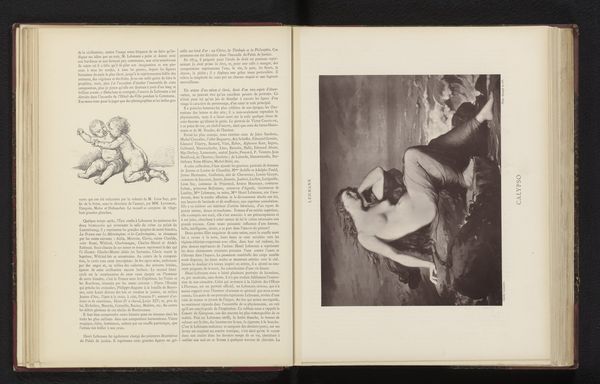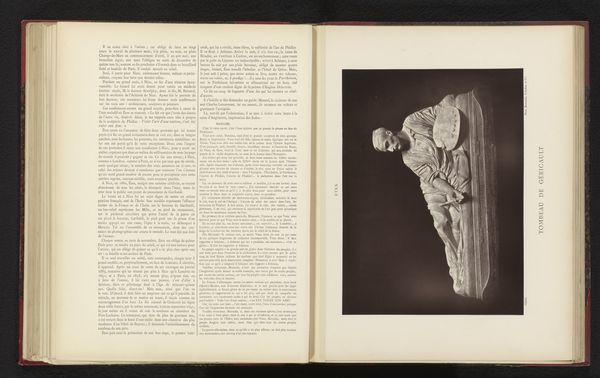
Sculptuur 'Les premières funérailles' door Louis-Ernest Barrias before 1884
0:00
0:00
adolpheblock
Rijksmuseum
#
aged paper
#
paperlike
#
book design
#
editorial typography
#
personal journal design
#
personal sketchbook
#
book mockup
#
thick font
#
publication mockup
#
publication design
Dimensions: height 250 mm, width 195 mm
Copyright: Rijks Museum: Open Domain
Editor: This image reproduces Louis-Ernest Barrias' sculpture 'Les premières funérailles,' made before 1884. It captures a poignant scene of grief. What draws my attention is how the figures are arranged; they’re almost intertwined, yet each expresses a unique sense of loss. What do you see in this work? Curator: The composition immediately suggests pietà imagery—the mother cradling the dead Christ. However, instead of religious figures, we have a clear invocation of primal, familial grief. The title "The First Funeral" implies a connection to our most ancient anxieties around death. Notice the protective stance of the male figure. Editor: Yes, he seems to offer support. The group evokes deep tenderness despite the circumstances. Curator: Exactly. It resonates on multiple levels. Consider the weight each figure carries—literally and symbolically. What psychological archetypes do you see emerging in the composition? The woman weeps while he holds the limp body of the child. It suggests cycles of death and remembrance—deeply embedded within human cultural memory. Editor: It’s as if each pose encapsulates a different stage of processing loss. Her outpouring of emotions against the stalwart yet somber, almost dutiful nature, of the father. I never thought of this sculpture in connection with cultural memory. Curator: Grief rituals vary vastly cross-culturally, yet certain threads remain—communal support, remembrance, mourning, all trying to instill order onto death. What has surprised you? Editor: How powerfully even subtle details convey these primal narratives of loss. Thank you! Curator: Likewise. These archetypes persist precisely because they echo deep-seated human experience.
Comments
No comments
Be the first to comment and join the conversation on the ultimate creative platform.
